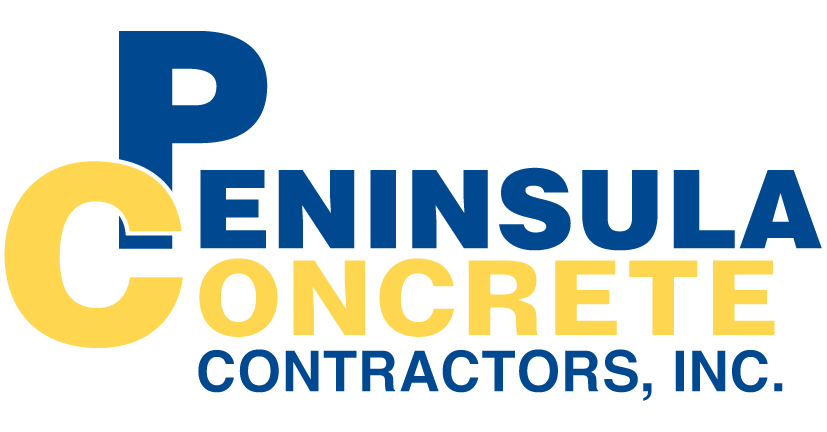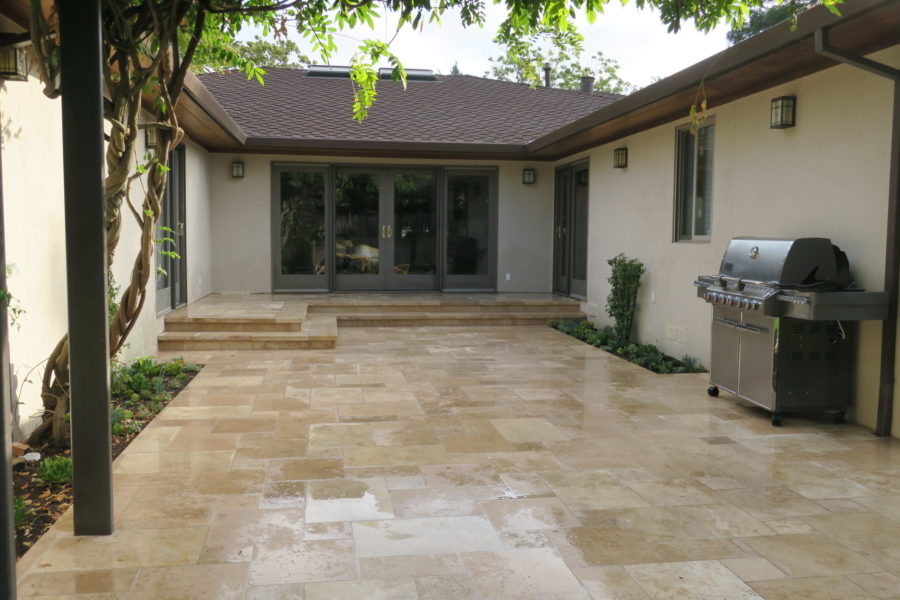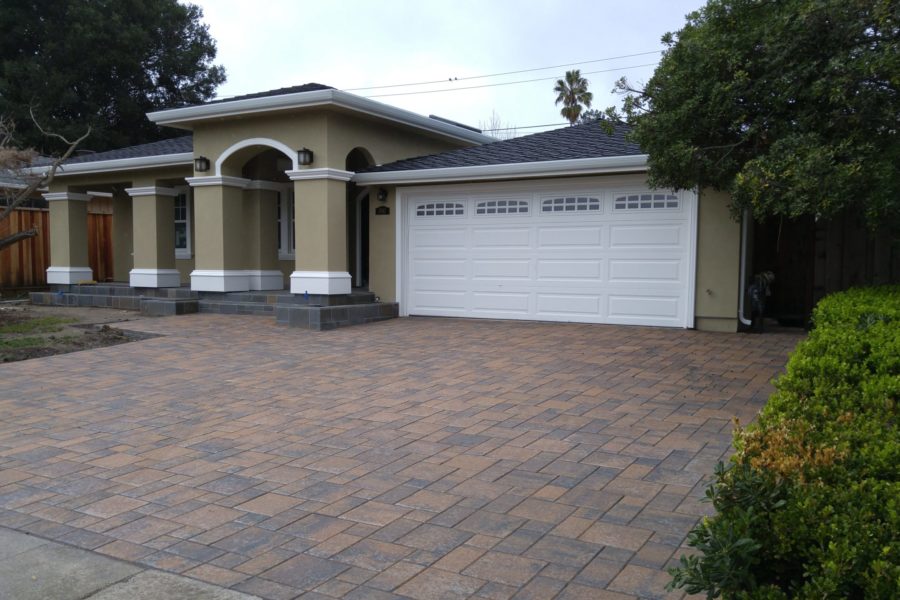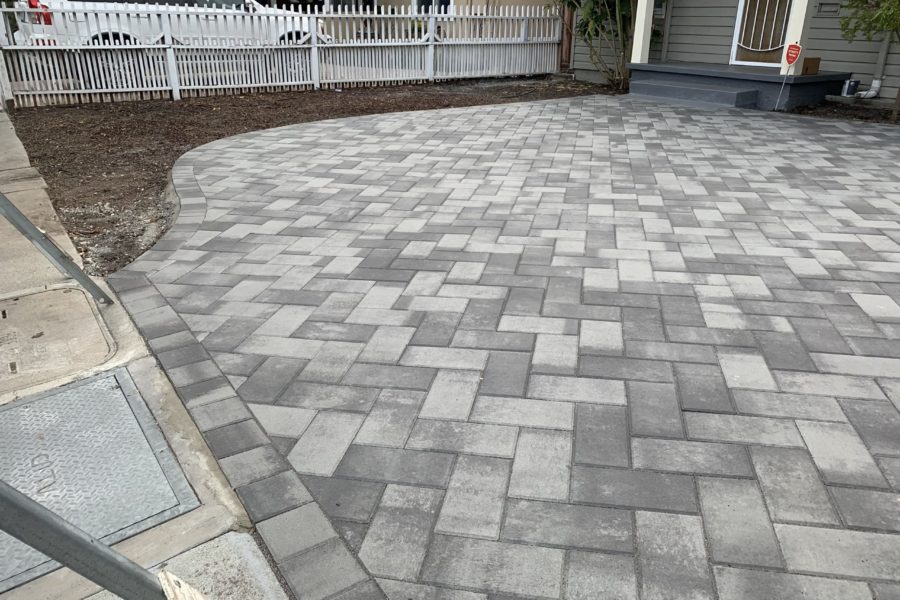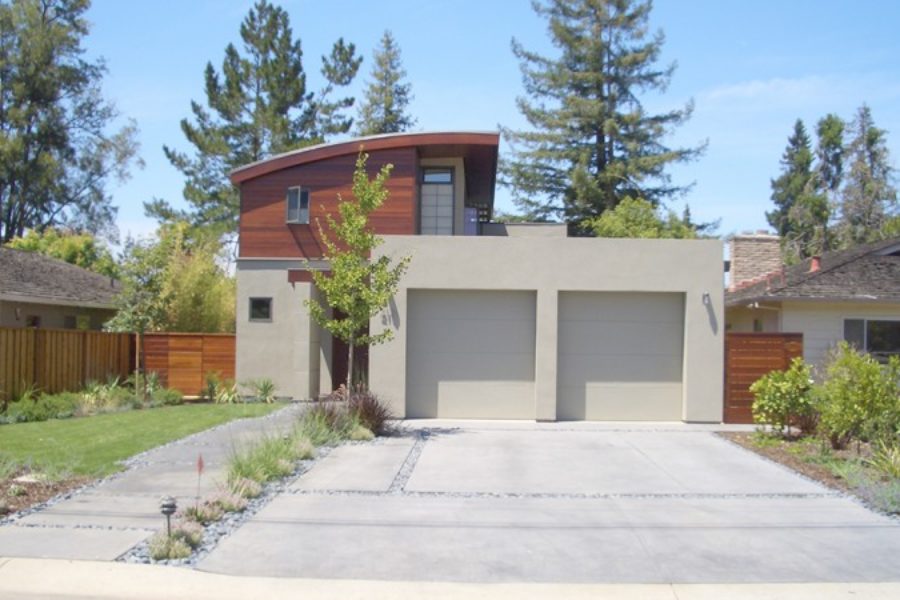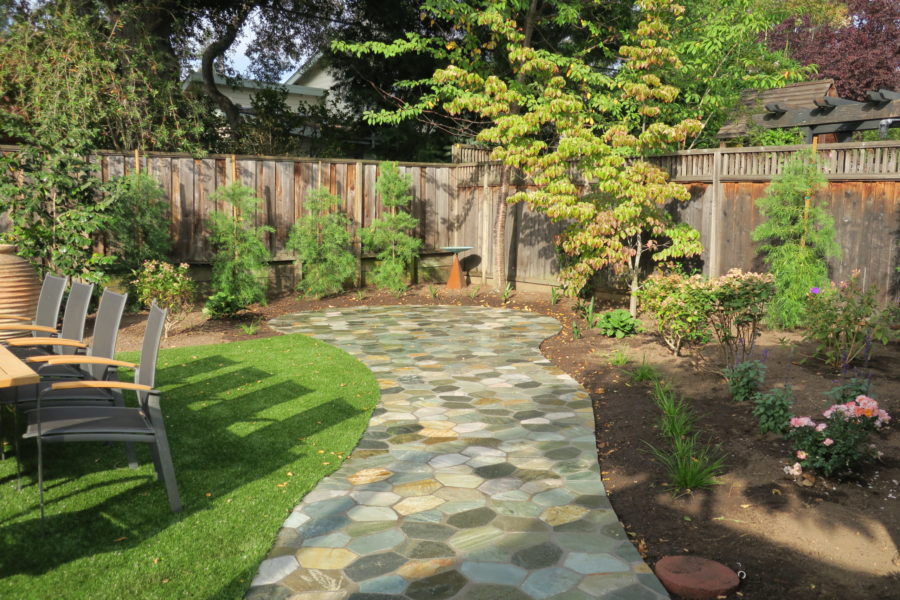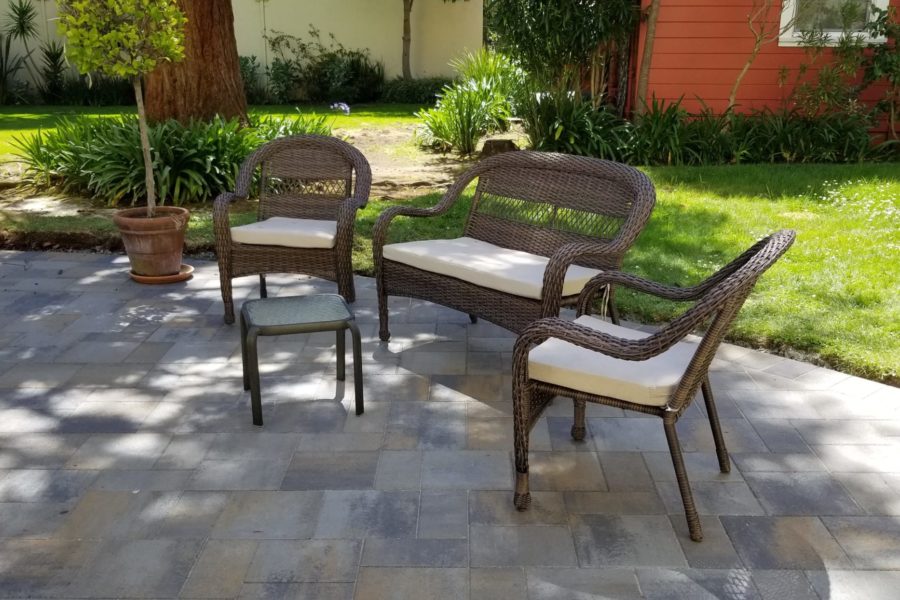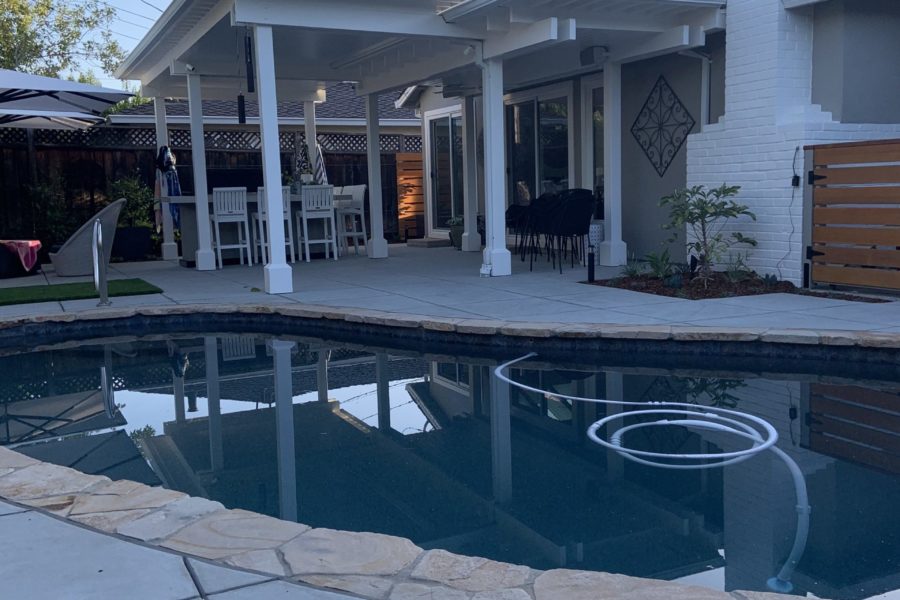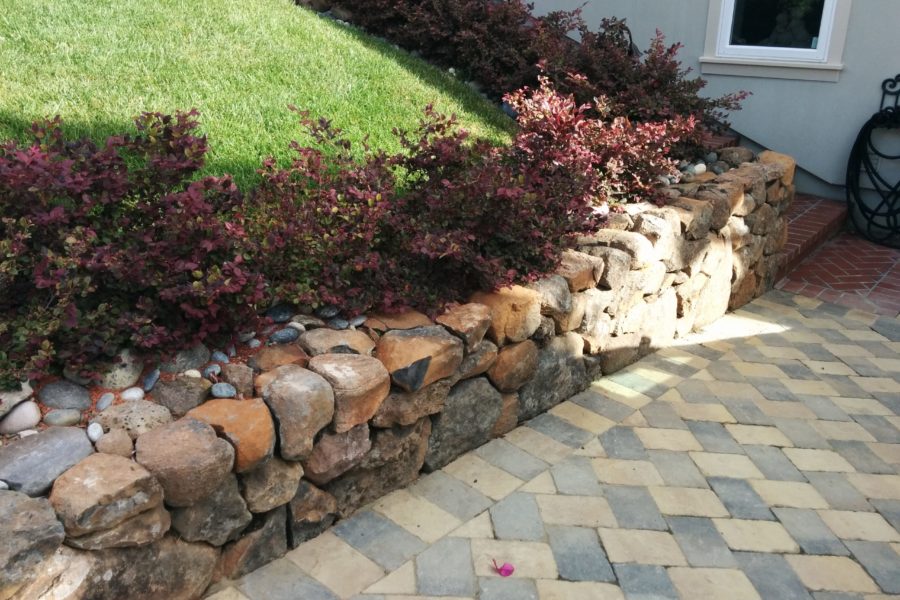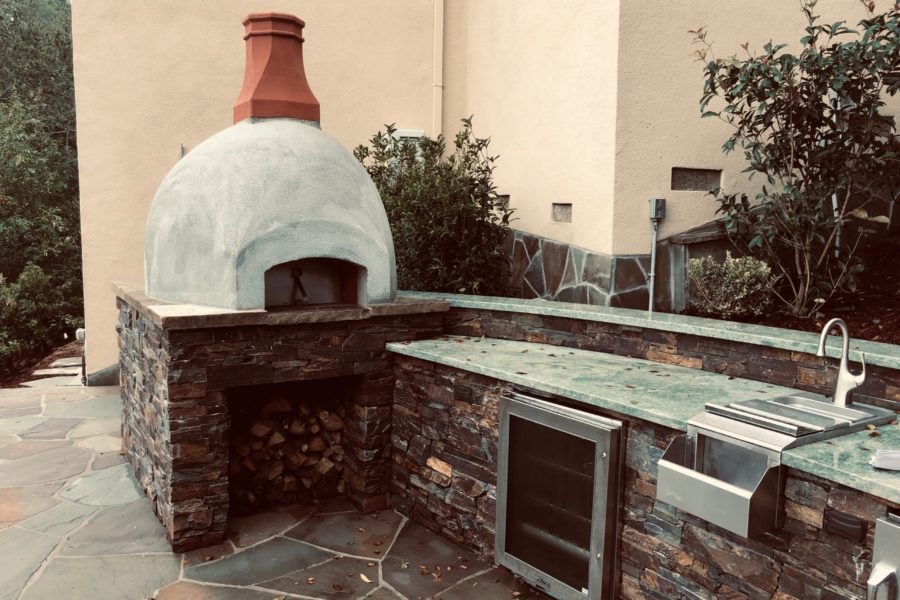A retaining wall is a structure that holds or retains the soil behind it. Garden walls (also called courtyard and patio walls) are free standing structures, which do not retain soil, but serve to divide an outdoor area into two or more unique spaces.
These walls can be constructed from many different materials, our areas of expertise include: concrete blocks, poured concrete, treated lumber, and dry stack rock.
Building permits may be required for walls above a certain height, if the wall is supporting any structure such as a driveway, pool, or street, or if the surcharge is greater than an amount determined by your local city or county guidelines. We encourage all property owners to check with their local city, town, and/or county to ascertain if a permit will be required. If you have any questions about the permitting process, feel free to give us a call.
CONCRETE BLOCK (CMU)

CMU block walls are constructed by stacking CMU blocks over a concrete footing. When the footing is constructed, standard reinforcement bar (rebar) is set vertically and extended upwards to the desired height of the wall. After the concrete footing has cured, the CMU blocks are set in place with the rebar running vertically through precast slots in the blocks. These slots are then filled with concrete. Retaining walls constructed using CMU blocksare not very aesthetic pleasing. Therefore, they are typically covered with a stone veneer or coatedwith either stucco or plaster and then painted. Interlocking Blocks and Retaining Wall Systems Interlocking block and retaining wall systems have truly revolutionized the process of retaining wall construction. Often designed to resemble realistic stone, these block systems can be sourced in an almost unlimited number of shapes, sizes, textures, and colors. Most manufactures have developed a proprietary system, which ensures there blocks fit together accurately and that they provide the strength and durability required for their intended application. These systems look beautiful when built adjacent to matching interlocking paver installations.
Our go-to product line is the Allan Block concrete block retaining wall system. It can be utilized for both residential and commercial application and is available in many sizes, shapes, textures and colors. We encourage you to learn more about Allan Block products by visiting: http://www.allanblock.com
CONCRETE POURED IN PLACE

Concrete retaining walls are valued for boththeir strength and versatility. They require very precise methods of construction and years of experience to install correctly. With this high level of technical difficulty, comes a great deal of design versatility. We have the ability to customize wallcolor, texture, and even embed lighting. The most common wall finishes are: smooth finish (which nicely compliments the mid-century modern design aesthetic, rough finish (which is typically covered with a stone veneer), form lined (which is how we impart intricate patterns on vertical surfaces), and custom board lined (where we select the wood utilized to construct the concrete forms based upon the wood grain we want to impart into the concrete).
TREATED LUMBER

Walls constructed from lumber (pressure treated and/or redwood) are typically the lowest cost option for retaining soil. When set adjacent to concrete, interlocking paver, or natural stone hardscape, walls built from lumber add an interesting design element to outdoor spaces. It is important to keep in mind that lumber walls are built in straight lines and cannot be curved to follow the natural topography like some other materials.
DRY STACK STONE | ROCK WALLS

Dry stack stone walls, which can be constructed with or without mortar, have been around for many millennium. Often constructed using locally sourced stone, hand built stone walls add a tremendous amount of natural texture to any project.
